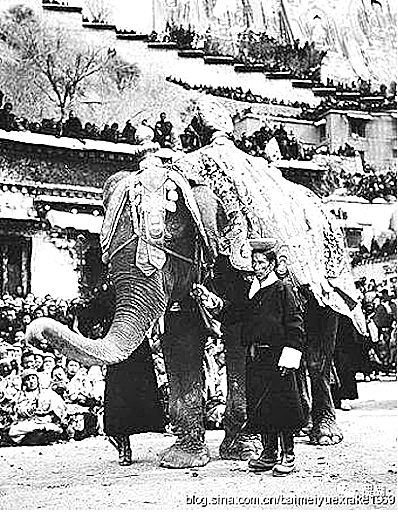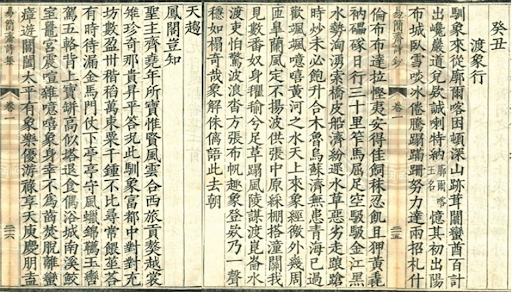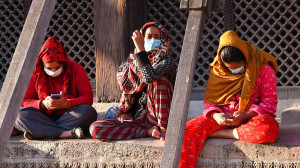Culture & Lifestyle
When elephants from Nepal went to China
In 1792, Nepal dispatched a tribute embassy to the Qing court. Among the many tributes provided by Nepal were two elephants: Xunyuanxiang and Furouxiang.
Raunab Singh Khatri and Aneka Rebecca Rajbhandari
The expanding Gorkha empire of Nepal attempted an invasion of China’s Tibet in 1791. The Tibetan forces requested the Qing government’s intervention and in 1792 attacked Nepal under the leadership of military-general Fukanggan. The war ended in the eighth month with Nepal’s defeat. After the defeat, Nepal dispatched a tribute embassy to the Qing court and paid tribute to the Emperor once every five years. Among the many tributes provided by Nepal were two elephants: Xunyuanxiang and Furouxiang.
What’s interesting about the elephant tribute by Gorkha is that in the same period, Emperor Qianlong had rejected any offering of elephants from the present-day Southeast Asian nations, citing high expenses. The elephants offered by Gorkha, however, were accepted under special terms. Research by historian and academic Yuri Komatsubara’s Meiji Asian Studies paper states that these two elephants were not “regular tribute items” but were presented in celebration of the enthronement of the new Emperor Jiaqing, who succeeded Emperor Qianlong. Hence, they were accepted only as a symbol of victory for Qing China over Gorkha in the second Qing-Gorkha War.

The fact that they were special tributes can also be understood by their names Xunyuanxiang (‘the elephant that soothed afar’) and Furouxiang (‘the elephant that obediently surrendered’). Recognising its symbolic importance, He Ying, who worked in Tibet during the Qing dynasty, wrote the poem ‘Du Xiang Xing’ (the title indicating the long journey of the elephant) in 1793 which also marked the beginning of his work as a minister in Tibet. From the details of his poem, He Ying may have come to Beijing with emissaries and tributes. Yuri’s research also provides that the elephants sent as tribute in the 18th century were not acquired from Nepal, but were from India and sent to Lhasa through Bhutan.
Qianlong even commissioned French missionary He Qingtai and Italian missionary Pan Tingzhang in the Qing court to paint the Gorkha tributary horse and elephant scroll as shown below.

In later years, tributary elephants sent by Nepal would remain in Tibet. During the reign of Qianlong, the two elephants were to be given to the 13th Dalai Lama and Panchen Lama. In later years, elephants would continue to be sent as gifts. For example in 1936, Nepal sent the last two elephants: one male and one female. The elephants set off from Nepal to Lhasa walking a long journey through the wilderness and across the Himalayas. From the border to Lhasa, there were countless elephant houses built along the way that housed the elephants for rest during the nighttime. The people who accompanied the elephants to Lhasa were responsible for preparing elephant sheds and food at each resting place. It also reported that the male elephant couldn’t make it to Lhasa as it died on the route and only the female elephant arrived as an emissary. When the elephant arrived in Lhasa, it is stated, the Nepali people responsible for transporting the elephant rode it three times around the Potala Palace as a sign of piety.

The elephant had come from afar and as a rare animal, it walked into the religious life of the Tibetan people in the plateau making it a treat for its audience. At that time, the Tibet government attached great importance to the protection of this elephant and sent special personnel to take care of it, feed it, and built a house where the elephant lived on the small island in the Dragon King Pool, located behind the Potala Palace. The heat and dryness in Lhasa made the elephant’s skin rough and hard and so, the servants would rub oil on the elephant to keep it protected.
It is because of its auspicious symbolism in Tibetan Buddhism, that the elephant would be ‘invited’ to participate in religious events. The elephants would attend to various activities throughout the year. As one of the seven well-known mascots of the Tibetan tradition, the elephants would wear Buddhist scriptures and ornaments and would be taken to Lhasa to participate in the prayer for the Dharma Assembly, which invites a large crowd to gather around it.

This would turn out to be the last living reminiscence of the continuity of Qing-Gorkha relations. The elephant eventually died in the 1960s, the period which saw the transition of modern Sino-Nepal relations. In 2018, nearly half a century later, Lhasa welcomed elephants again. This time the elephant was bought from Kunming to be kept at the Quishi Animal Protection Park and was named ‘Ni Pu’ which has Buddhist references. The legacy of elephants in Lhasa continues to live on and also remains an important cog in overall Nepal-China relations.




 10.12°C Kathmandu
10.12°C Kathmandu













%20(1).jpg&w=300&height=200)

